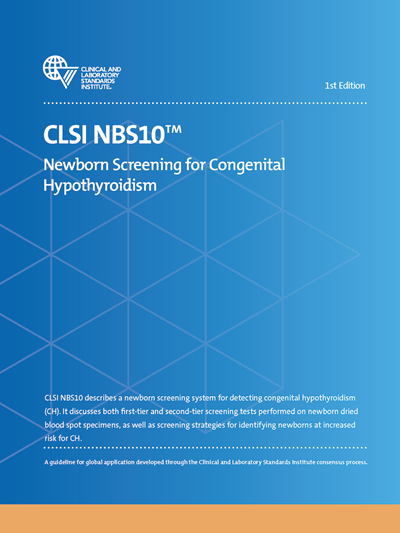CLSI NBS10
Newborn Screening for Congenital Hypothyroidism, 1st Edition
CLSI NBS10 describes a newborn screening system for detecting congenital hypothyroidism (CH). It discusses both first-tier and second-tier screening tests performed on newborn dried blood spot specimens, as well as screening strategies for identifying newborns at increased risk for CH.
Member price:
List Price:Details
Chairholder: Ronald J. Whitley, PhD, DABCC, FACB
Date of Publication: April 18, 2024
Order Code PDF: CLSI NBS10Ed1E
ISBN Number: 978-1-68440-223-6
Order Code Print: CLSI NBS10Ed1
ISBN Number: 978-1-68440-222-9
Edition: First
Pages: 104
CLSI NBS10 Additional Details
A guideline for global application developed through the Clinical and Laboratory Standards Institute consensus process.
If interested in ordering larger quantities of this document in print, please contact us here.

